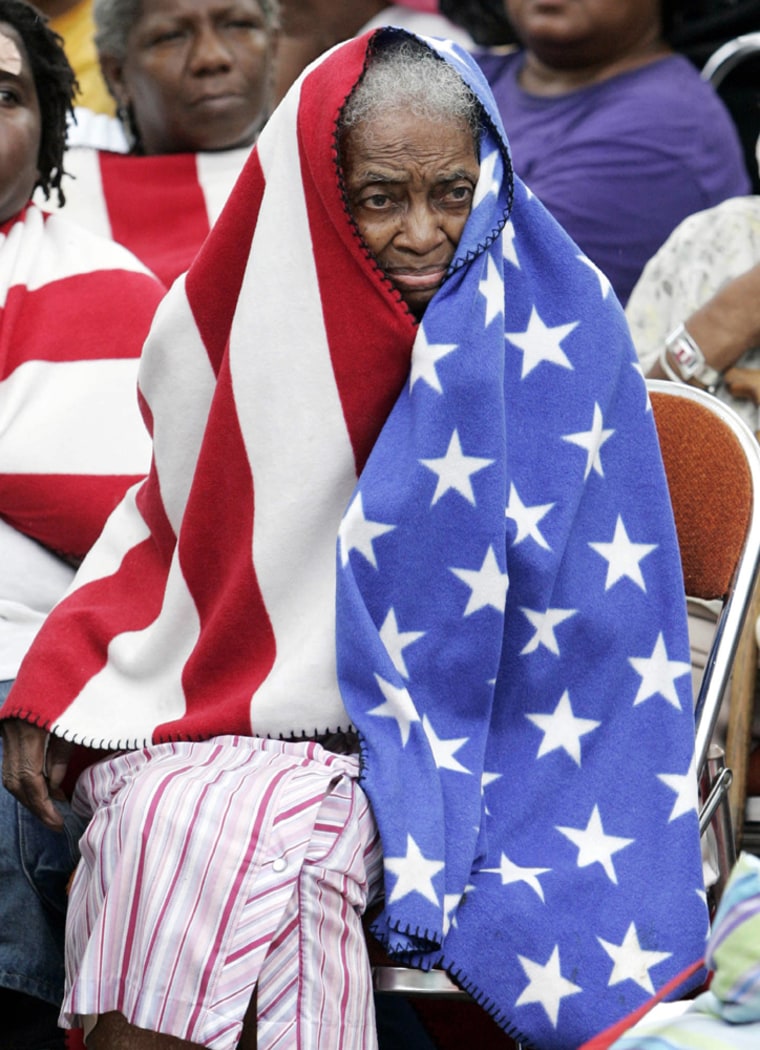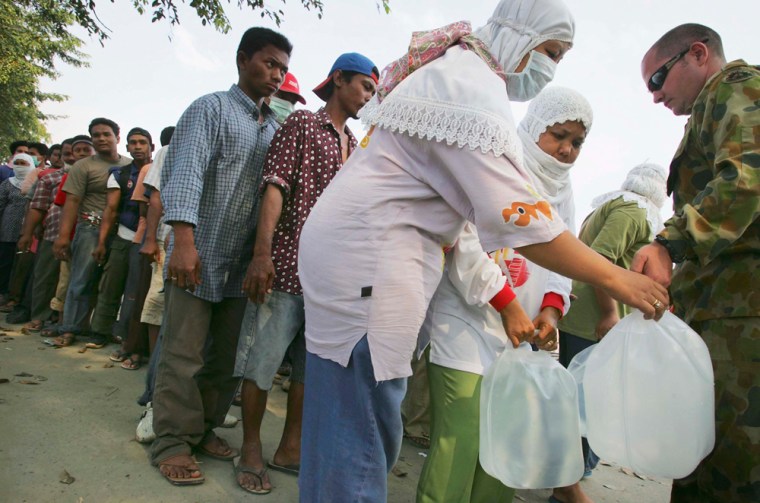The minister who led Indonesia’s aid effort in the aftermath of the tsunami has a message to those who say the Bush administration was too slow to respond to Hurricane Katrina — it’s not as easy as it looks.
“Any country in the first two weeks, they are always criticized,” said Alwi Shihab, who took charge of the aid operation three days after the waves hit Aceh province on Dec. 26, killing a staggering 130,000 people and leaving 500,000 more homeless in Indonesia.
“The first 10 days we were cursed for being sluggish. If the government satisfies half the people, the other half will complain. And this one half will be heard by the world,” Alwi, a respected former foreign minister, said in an interview with The Associated Press.
The U.S. emergency response to Katrina has been widely criticized, with many wondering why one of the world’s richest and most powerful countries was unable to protect its citizens better — especially given the week’s warning that Katrina was on its way and levees protecting Lake Pontchartrain in New Orleans might not be able to withstand its force.
Indonesia — and the 10 other mostly poor countries that fell victim to the monster waves the likes of which have not been seen in living memory — had no such warning. A total of an estimated 170,000 people were killed in the affected countries.
Tsunami response considered a success
Most experts and aid workers in Aceh consider the initial tsunami relief operation a success, given the extent of the destruction, the province’s remoteness and the fact that it had been closed to foreigners for two years because of a long-running civil war.
“Despite all that, extremely few people lost their lives as a result of insufficient assistance,” said Michael Elmquist, who ran the U.N.’s relief operation in Aceh in the first weeks after the disaster. “By and large, the response was good.”
Although it took several weeks to reach everyone, rice, tents and drinking water got to the most desperate tsunami victims within days in Aceh province, a region of 4.3 million people — nearly 10 times the size of the city of New Orleans.
Boots on the ground early and often
Indonesian President Susilo Bambang Yudhoyono, who had been visiting survivors of an earlier earthquake, arrived in the province the day after the tsunami hit, having flown from the other end of the Indonesian archipelago.
Seeing the extent of the destruction, he immediately announced he needed international aid, a bold decision that risked opposition from nationalist lawmakers.
“That was a very clear steer early on,” said Charlie Higgins, one of the first U.N. officials on the ground. “It was a big step that helped coordinate the responses.”
President Bush didn’t announce he was cutting short his summer vacation until the second of two levees broke in New Orleans on Aug. 30, inundating 80 percent of the city with floodwaters.
Waiting for the cavalry to arrive
Contributing to perceptions the U.S. federal government was too slow to respond to Katrina, Bush waited another two days to visit the region on the ground — just as thousands of National Guardsmen finally arrived in New Orleans in truck convoys carrying food, water and weapons and as Congress approved the first $10.5 billion for immediate rescue and relief efforts.
Military and civilian officials said deployment of National Guard troops from Mississippi and Louisiana in Iraq when Katrina hit hindered those states’ initial storm response.
In Aceh, the first foreign military arrived in the province two days after the disaster.

Four days later, the first U.S. choppers based on aircraft carriers begin flying relief missions down the province’s West coast, part of the army’s biggest military deployment in Southeast Asia since the Vietnam War.
In all, nearly $7 billion was pledged in aid, and the tsunami emergency response mission in Aceh involved the military might of 14 nations, including some 15,000 U.S. military servicemen.
Few signs of looting after tsunami
Unlike in New Orleans, where law and order broke down soon after the levees broke, there was little or no looting in Aceh — something most people attribute to the region’s strong community ties. Aid officials also were impressed by the self-sufficiency of the Acehnese.
“The reality is that people picked themselves up very quickly,” said John Long, an Irish aid worker who has been in Aceh since soon after the disaster.
Indonesians from all over the country had also descended on the province, many working to recover corpses, tens of thousands of which remained uncollected more than a month after the disaster. But their presence in the early days meant more than just material support.
“The influx of volunteers was an astounding boost for the people of Aceh,” said the U.N.’s Elmquist. “They could see other people in Indonesia cared for them.”
